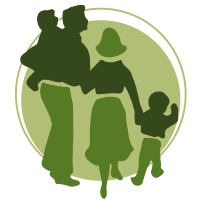With the start of the new school term looming one of the things that can really help your child to learn and focus is getting them to eat something for breakfast and I’m not talking about a packet of crisps and fizzy drink bought on the way to school!
Why is breakfast important?
Children’s brains are like sponges soaking up loads of information and as a result the brain uses up enormous amounts of energy.
What we feed our children can have an impact on their mood, concentration, attention span and the ability to learn.
Breakfast is a particularly important meal for children. If breakfast is skipped then blood sugar levels can fall rapidly leading to symptoms including anxiety, aggression, lack of concentration, fatigue, headaches, panic attacks, tears and mood swings – not exactly conducive to learning in the classroom.
Children often experience mood swings and sometimes erratic behaviour but cannot express how they are feeling through words. Inevitably it is their actions that we take note of especially if they are trying our patience!
Some ideas for breakfasts
I have put together a few ideas to introduce some variety into breakfast times and tempt your children to eat.
Firstly, try to throw out your preconceptions of what a breakfast should be. Most of us think along the lines of something sweet, be it a cereal, toast and jam or croissants and these are the kinds of foods that are marketed as being ‘breakfast’ foods. But, when it comes to children (and adults too) it is worth thinking outside the box offering some other ideas which may go down better.
Lots of children say they are just not hungry in the morning so it’s a question of tempting them to try to eat at least a little bit of something:
- Smoothie (http://www.lucksyardclinic.com/breakfast-smoothie/)
- Some fruit and chunks of cheese eg slices of apple, pear, berries etc. Add chunks of whatever cheese they like.
- Proper porridge oats (not a pre-packed variety). If you soak this overnight in milk it will be so quick to cook. Add in spoon of ground almonds (if nuts are acceptable) and a teaspoon of honey. The cooked porridge can be served with some fresh fruit or a teaspoon of maple syrup drizzled over.
- Toasted mini bagel with variety of toppings: marmite, peanut butter, a little honey or try a nut butter which is a great source of protein.
- Yoghurt or fromage frais (full fat). Buying plain varieties and adding your own fruit is a healthier option. You could add a spoon of crunchy granola on top rather than a whole bowl of cereal.
- Little bowl of chopped fruit with some carrot sticks or slices of red pepper and dip such as hummous.
- Crackers with some ham or salami
- Cheesey oatcakes with butter or cream cheese spread (also breadsticks with spread or dip)
- Beans on toast or grilled cheese on toast cut into fingers
Try to avoid sugary breakfast cereals and juice drinks that have added sugar. Remember that pure juices are also a source of sugar so try to encourage your child to try plain water or a glass of milk both of which are better options. Excess sugar leads to unhappy, hyped up kids and causes a rollercoaster of blood sugar levels which makes it difficult for children to concentrate and hard for teachers too!
This is a recipe for pancakes that goes down very well in my household and before you all shout ‘we haven’t got time to do this!’, I have done this on a school morning – preparation is the key! (and maybe getting up a bit earlier…..but in my experience the smell of the pancakes can get most kids out of bed). You can make a big batch of this mixture and keep covered in the fridge for a couple of days. Just stir it all back together again and away you go.
Makes about 10 pancakes:
- 200g self raising flour – I use a combination of ½ and ½ wholemeal and white spelt flours. You could also use buckwheat flour that is gluten free
- 1 tsp baking powder
- 1 large egg
- 300ml milk – you can use a plant based milk if desired
- 1 tsp ground cinnamon
- Pinch sea salt
Method
- Mix together the flour, baking powder and a pinch of salt in a large bowl. Beat the egg with the milk, make a well in the centre of the dry ingredients and whisk in the milk to make a thick smooth batter.
- Heat a small knob of butter in a large non-stick frying pan. Drop a large tablespoonful of the batter per pancake into the pan to make pancakes about 7.5cm across. Make three or four pancakes at a time. Cook for about 3 minutes over a medium heat until small bubbles appear on the surface of each pancake, then turn and cook another 2-3 minutes until golden. Cover with kitchen paper to keep warm or in a warm oven while you use up the rest of the batter.
Try these alternatives:
- Chop up fresh berries (strawberries are especially good for this) and add a teaspoon of natural maple syrup. Let the berries macerate for 10 minutes or so and you will get a lovely syrup. Serve with the pancakes – no extra sugar needed!
- Any other kind of fruit – whatever your children likes
- Chopped toasted nuts – sprinkle on with some lemon juice and 1 teaspoon runny honey or maple syrup
- Whipped ricotta cheese or full fat Greek yoghurt with lightly toasted pine nuts
- Lime juice and grated coconut – you can buy little packs of fresh coconut that can be easily grated in a nut/spice/coffee grinder. Add a little sprinkle of muscovado sugar or palm sugar (jaggery)
- Cream cheese or crème fraiche with strips of smoked salmon and fresh dill



